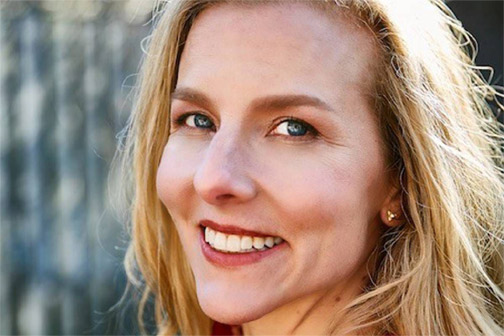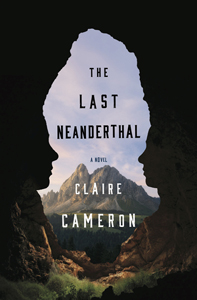 You may already know Toronto author Claire Cameron from her second novel, The Bear, which was published by Little Brown & Co. in the US, Doubleday in Canada, and Harvill Secker in the UK. It was long listed for the Baileys Women’s Prize for Fiction (formerly the Orange Prize) and is a number one bestseller in Canada. It won the Northern Lit Award from the Ontario Library Service.
You may already know Toronto author Claire Cameron from her second novel, The Bear, which was published by Little Brown & Co. in the US, Doubleday in Canada, and Harvill Secker in the UK. It was long listed for the Baileys Women’s Prize for Fiction (formerly the Orange Prize) and is a number one bestseller in Canada. It won the Northern Lit Award from the Ontario Library Service.
If not, perhaps you know her from her debut novel, The Line Painter, which was published in 2007 by HarperCollins Canada. It also won the Northern Lit Award from the Ontario Library Service and was nominated for an Arthur Ellis Crime Writing Award for best first novel.
Related Posts
Claire’s writing has appeared in The New York Times, The Globe and Mail, Lenny Letter, and Salon, and her latest novel, The Last Neanderthal, seeks to discover that which makes us human, but equally important, to make an impactful feminist statement about the world we lived in and live in today. The novel was a finalist for the Writers Trust Fiction Prize.
I recall a slew of 1980s films about early man. Quest for Fire was one that stands out as a brave narrative considering other movies at the time that were being released On Golden Pond, Raiders of the Lost Ark, Escape from New York, Chariots of Fire were all films which required at least one or two scenes worth of dialogue. Also from that decade, as it relates to early man, were the films Ice Man (filmed in Manitoba and British Columbia), and The Clan of the Cave Bear. Did you have fears early on about how you’d write a book in which one of the main characters can’t speak a written language? Did you look at any of these films to see how they constructed conversation?
When I started writing the book, I didn’t think about dialogue. I was more concerned with how current scientists were answering the question, “Did Neanderthals have language?” We have U-shaped bones in our necks. They anchor the tongue and allow us to speak with all the nuance that entails. Neanderthals also had them, but chimpanzees do not. So that was one piece of evidence that points towards Neanderthals being more in our camp when it comes to speech. Also, the FOXP2 gene enables speech and communication in us. We don’t know exactly how it works, but if you don’t have it those two things are difficult. Neanderthals also had this gene.
I worked from that basis, the science that pointed towards the possibility of language and went from there. One of the first things I did was write a glossary of Neanderthal words. I think of language as a route to an inner life, so imagining their words helped me get inside their world. To put this another way, I was more concerned about what Neanderthals were, rather than what they were not. I gave Girl, the main Neanderthal character, and enhanced sense of smell, vision, and hearing. I had a lot of scope to work with those. And I believe that Neanderthals were our equals in many ways, so she has a full cognitive range and inner life as well. They do speak, but in a measured and careful way. It never felt limited to me.
I did watch Quest for Fire at some point while I was writing. I loved it and it nearly ruined me! Parts were filmed in Ontario, near Toronto where I live, so I could imagine it exactly. They used the science of the time, but also projected from it in smart ways. When it finished I thought, Well–I’m not going to best that. Might as well quit. Then when I did start writing again, it was all Ron Perlman grunting with fake teeth. It took me about six months to shake it. After that, I decided I was too impressionable and stopped watching or reading all Neanderthal related stories until I was finished writing.
The point of my novel is that I went from the new science, especially after 2010 when the Neanderthal genome was mapped and it was discovered that many modern humans have Neanderthal DNA. They were our close cousins. I wanted to start there, rather than from older ideas.
What was the process like for putting together the two-pronged story of Rose and Girl? Was there a time when you could not write one without the other in mind?
I went back and forth and back and forth. For a long time, I thought I was writing two books. I couldn’t understand what two women who lived 40,000 years apart might have in common. I didn’t want to force them to have parallel lives, as that felt false. But, I also could stop writing the two stories. Something in my subconscious mind was making a connection that I couldn’t quite grasp. Once I made the connection, I talk more about this in the next question, I didn’t really think about one while I wrote the other. I tried to think about each in their context.
We have this notion that things are better in the modern era. While I won’t discount a refrigerator full of food, electricity, and central heating for a second, I wonder if this is completely true. Many parents feel isolated when their kids are young. Our home lives seem at odds with our work lives. It’s a struggle to look after kids and make money to pay for care. But making money is the modern equivalent of gathering food. We have to do both in order to live.
Related Posts
But it’s important to remember that pitting our work and home lives against each other isn’t something that happened naturally. We’ve purposefully structured our lives this way. Looking back might help us to see the present more clearly. Maybe it also opens up the possibility of imagining a better way going forward.
 The Last Neanderthal deals with motherhood in a unique way, with both characters not being able to of course speak with one another about their upcoming experiences, yet both have concerns and all the vulnerabilities of their realities to deal with. This is a linchpin for the novel — how early on did you know that Rose would pregnant? It’s a great way to connect the two women.
The Last Neanderthal deals with motherhood in a unique way, with both characters not being able to of course speak with one another about their upcoming experiences, yet both have concerns and all the vulnerabilities of their realities to deal with. This is a linchpin for the novel — how early on did you know that Rose would pregnant? It’s a great way to connect the two women.
As I mentioned, I didn’t set out to write about motherhood. Around the third or fourth draft I remembered back to when I gave birth to my second son. It worked out fine in the end, but there was a moment when I realized with clarity that he and I might die. It was one of the most raw and primal experiences of my life. And it is a process that has changed very little in 40,000 years. Our anatomy hasn’t changed much in that time. What I felt would be closer to what a woman living back then
You like to draw from real life in your novels. The Bear, your last novel, was inspired from a bear attack in Ontario, while in The Last Neanderthal, you’ve drawn from recent discoveries of early man found in an embrace in 2010. How hard it is to go from cold fact-based research to the warmth of fiction?
The Last Neanderthal was different as I did about five years of research. The Bear was backed by research, but it had happened naturally over the course of the previous 20 years of my life. I’ve also been obsessed with bears. You put the problem perfectly, how to turn archeological evidence, bits of stone tools and fragments of bone, into something warmer?
More than 10 years ago, I saw a photo of “The Lovers of Valdaro” online. They are two homo sapiens from more than 5,000 years ago that were found lying together in Mantua, Italy. I was struck by the photo and stuck it on my wall. At some point during the writing of this novel, I did get too steeped in the research. I couldn’t find the feeling of them.
One day I looked over at “The Lovers,” as I call them, hanging on my wall. I realized what struck me about the photo was that I could imagine how it might feel to be one of them. We all probably can — lying in bed next to your lover, looking into her or his eyes, and feeling connected in such a close way. I had this idea, what if one of the skeletons were a Neanderthal? It was then that I could picture what it might be like to be her. I had the same kind of eyes and blood and skin — I could imagine feel what she did. It was like I had to hop back more than 5,000 years in order to stretch to back as far as 40,000 years.
Related Posts